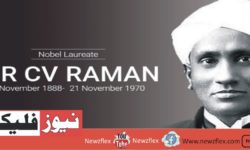C. V. Raman
C. V. Raman Lived 1888 – 1970. It was discovered by C. V. Raman that light may give a small amount of energy to a molecule when it interacts with it. The molecule vibrates and the light changes colour as a result. The molecule may use the colour shift as a “fingerprint.” Certain fingerprints are […]





